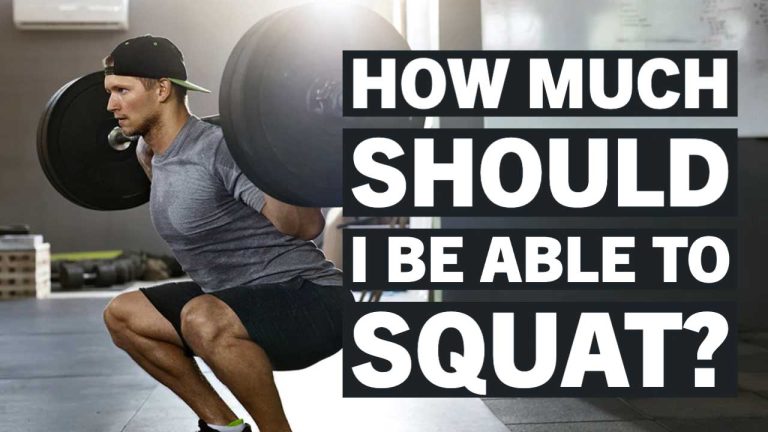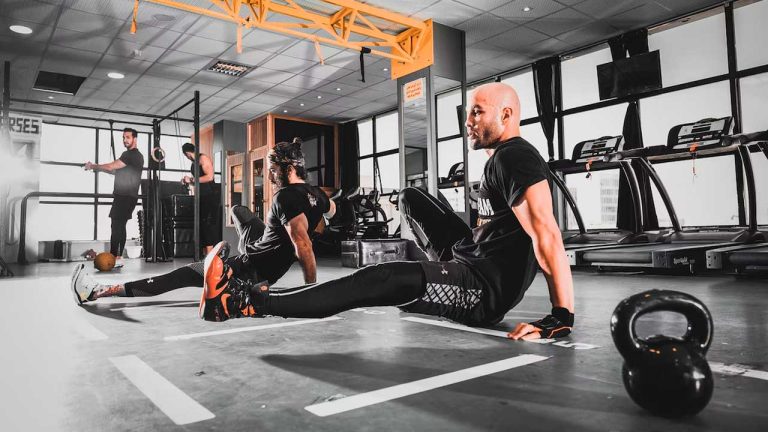Learning Double Unders: A Quick Guide for Beginners
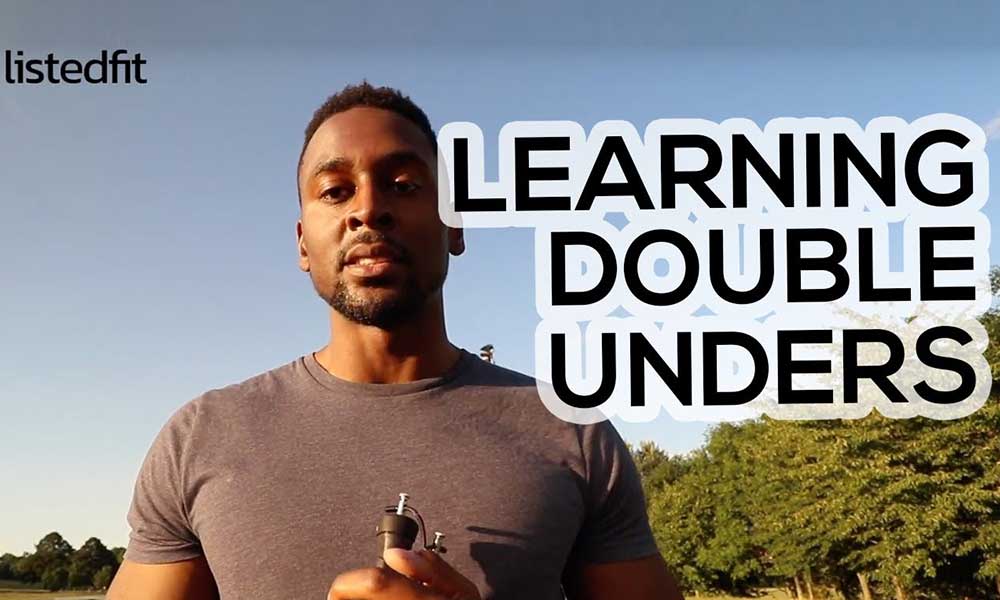
ListedFit is reader-supported. When you buy through links on our site, we may earn a small commission.
Learning double unders is a challenging yet beneficial skill to master, particularly for those who are enthusiastic about fitness and looking to elevate their workout.
For those unfamiliar with the term, double unders involves jumping rope where the rope passes under your feet twice with each jump.
This might appear intimidating, but with the right form, technique, and practice, you’ll soon be able to perform double unders with ease.
Quick Summary
Understanding the proper form and technique is crucial to mastering double unders. As a beginner, you’ll need to start with the foundation of single unders and gradually progress to higher jumps.
Training and practice play a significant role in refining your skills and correcting common mistakes. Moreover, double unders have gained popularity in CrossFit, and using the best rope suited for this exercise can impact your overall performance.
Key Takeaways
- Mastering double unders requires practice, proper form, and technique.
- Training and correcting mistakes are essential for improvement.
- Choosing the right rope affects your double unders performance.
In This Article…
Why Learn Double Unders?
So, you want to learn double unders? Great choice! Double unders are a fantastic way to level up your jump rope skills and add some intensity to your workouts. In this section, we’ll explain what double unders are and how you can start practising them. Remember, practice makes perfect!
Double unders, or “dubs” as they’re sometimes called, involve jumping rope with the rope passing under your feet twice in one jump. It’s double the fun and double the challenge compared to single unders, where the rope passes under your feet just once per jump.
To start learning double unders, it’s essential to have a solid foundation in single unders. You should be comfortable with jumping rope and able to perform about 50 unbroken single unders before moving on to double unders. This will ensure you have the stamina and coordination required for the more demanding double under technique.
Now, let’s talk about the jump. When performing double unders, it’s crucial to jump correctly. Focus on jumping comfortably on the balls of your feet and pulling your knees up slightly. The jump for double unders is slightly higher than for single unders, giving the rope enough time to pass under your feet twice.
It’s also important to work on the speed of your rope. Since the rope needs to pass under your feet twice in one jump, you’ll need to increase the speed of your wrist movement compared to single unders. Keep your arms and wrists close to your body for better control and accuracy.
Remember, learning double unders takes time, and it’s okay to feel frustrated at times. Keep practising, be patient with yourself, and soon enough, you’ll be nailing those double unders like a pro! So, grab your jump rope and give it a go – you’ve got this!
What’s The Best Rope to Learn Double Unders?🤔
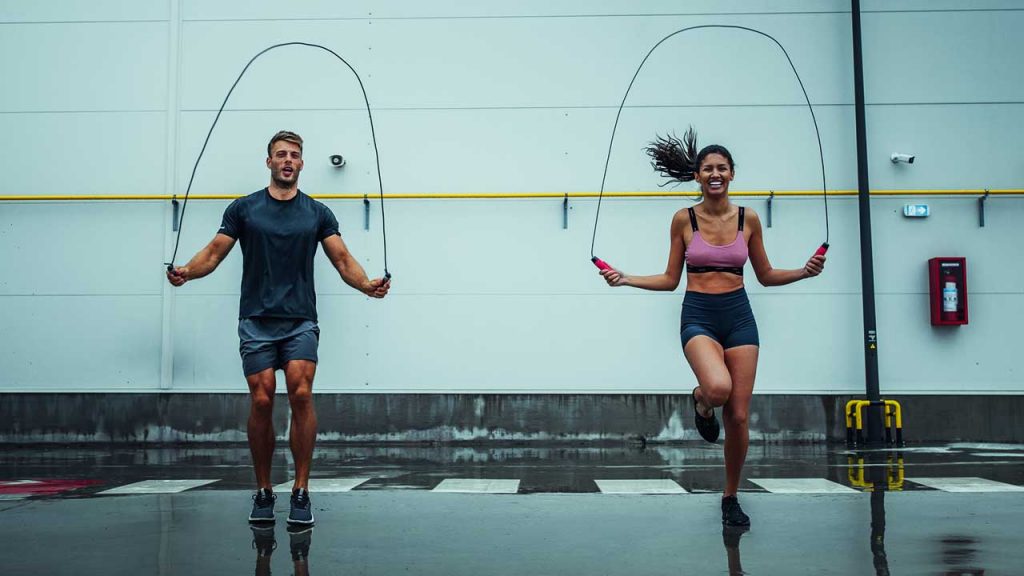
If you want to learn double unders, and the right rope is crucial to mastering this skill. Let’s have a look at what you should consider when choosing the perfect rope to support your learning journey.
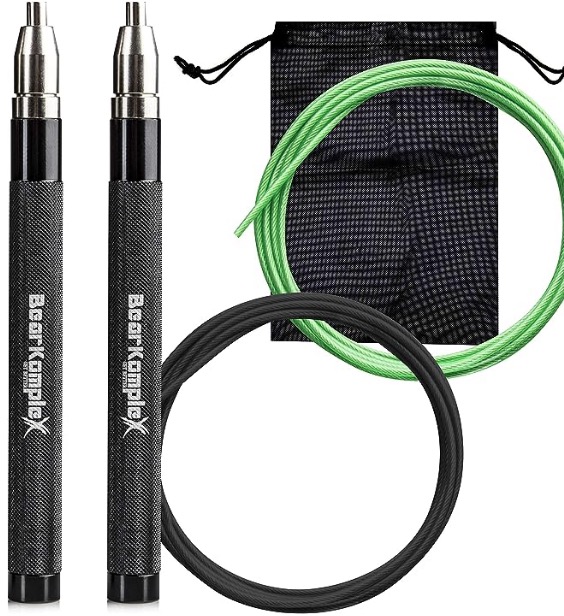
A good speed rope will make a big difference.
Check out this one from Bear Komplex.
First off, speed ropes are a great option for learning double unders. They’re lightweight and designed for quick rotations, which can help enormously in improving your speed and efficiency during your jump rope workouts.
Traditional jump ropes might work for beginners, but as you progress in your double under journey, you’ll find that a speed rope aids in the smoother transition to faster jumps.
CRUCIAL – Get The Right Rope Length
Getting the right rope length is crucial for learning double unders. A rope that’s too short will make it difficult to maintain smooth rotations, while a rope that’s too long might slow you down and result in frequent tripping. So, how do you figure out the right length for you?
Stand in the middle of the rope with one foot, and lift both handles upwards. Ideally, the handles should reach around your armpit level. If they’re slightly shorter or longer, it’s still acceptable, but too far off this measurement may hinder your progress.
Getting The Right Form and Technique
Grip and Handles
For an ideal grip, hold the rope handles with your thumbs and index fingers near the end, allowing for smooth rotation. Keep your wrists relaxed and your hands close to your body, around waist level. Avoid gripping too tightly, as this can cause tension and reduce control.
Height and Jumping
Jump just high enough to allow the rope to pass under your feet twice. Focus on maintaining good posture, with your head straight, chest up, and shoulders back. The key is to jump off the balls of your feet and avoid excessive knee bending.
Timing and Coordination
Developing timing and coordination is essential in mastering double unders. As you’re jumping, ensure the rope rotates fast enough to pass under your feet twice with each jump. You can achieve this by flicking your wrists sharply and maintaining the rhythm throughout your jumps.
Landing and Balance
Land softly on the balls of your feet and maintain a slight bend in your knees for shock absorption. This will help create a stable base, improve balance, and reduce the impact on your joints. Maintain a consistent rhythm for better control and coordination during your double unders.
Control and Efficiency
The key to control and efficiency is to keep your movements minimal and smooth. Focus on using your wrists, not your arms, to generate the rope’s speed. Maintain consistent jumps and perfect your timing to reduce energy expenditure and maximize your efficiency during the double unders. Remember, practice makes perfect!
Training and Practice
Starting with Single Unders
Before moving onto double unders, it’s important to get comfortable with single unders. Single unders involve jumping over the rope with just one rotation. Practise single unders until you can do roughly 50 unbroken reps. This will not only build your stamina but also develop a sense of rhythm that’s essential for double unders.
Progressing to Double Unders
Once you’ve mastered single unders, you can start with the double under progression. Double unders require the rope to pass under your feet twice per jump. To nail this technique, focus on the following components:
- Bounding higher off the ground
- Turning the rope faster
- Getting the timing right
Initially, you may struggle with coordination, but with practice, you’ll be able to make the transitions feel more intuitive.
Drills for Improvement
To help you improve your double unders, consider incorporating specific drills into your training routine. Some popular drills include:
- Penguin Taps: While jumping rope, gently tap your hips twice for each jump. This simulates the timing required for double unders without using the rope.
- Double Under Jump Rope Drills: Start with a slow basic jump and gradually increase the height of your bound. This will help you learn the proper bounding technique for double unders.
Remember, practice makes perfect. Stay patient and consistent in your training, and you’ll soon be nailing those double unders with ease.
Mistakes and Corrections
Common Mistakes
One common mistake you might make when learning double unders is not mastering single jumps first. It’s essential to get comfortable with single jumps before moving on to double unders. Aim to achieve 100 single jumps in a row, unbroken, before attempting double unders.
Another frequent error is using a rope that’s too long. This can throw off your timing and make it difficult to perform double unders efficiently.
Correcting Bad Habits
To correct bad habits, start by focusing on your single jumps. Consistently practise until you’re able to complete 100 single jumps in a row, unbroken. This will provide a strong foundation for executing double unders.
To address the issue of using a rope that’s too long, make sure to measure the length of your jump rope correctly. Stand on the middle of the rope and lift the handles up; they should reach just below your armpits. Adjust the rope length accordingly to ensure it’s the right size for you.
Moreover, maintaining the proper rhythm is crucial for mastering double unders. One helpful technique is practising without a rope at first. Try slapping your thighs twice for every jump to develop a sense of timing and rhythm.
Remember, to effectively learn double unders and correct any bad habits, it’s essential to be patient with yourself and practise consistently. Regularly reflecting on your progress and seeking feedback from coaches or fellow athletes can also be beneficial in identifying areas of improvement. Keep working on your skills, and you’ll eventually see progress in your double unders!
Double Unders in CrossFit
Incorporating into Workouts
Double unders are a popular movement in CrossFit workouts due to their ability to challenge your stamina and coordination.
To begin incorporating double unders into your workouts, first master your single unders. Once you’re comfortable with around 50 unbroken single unders, you can start practising double unders.
In your CrossFit programming, consider adding double unders to your workout of the day (WOD) as a warm-up exercise or as part of a high-intensity interval training (HIIT) session. You can also use them in combination with other movements like burpees or squats to create an intense circuit workout. Some examples of workouts that include double unders are:
- AMRAP in 10 minutes:
- 30 Double Unders
- 15 Burpees
- 3 Rounds For Time:
- 50 Double Unders
- 20 Air Squats
- 10 Push-ups
Complementing Other Movements
Double unders not only test your cardiovascular endurance, but they also work well with other movements in CrossFit workouts. When you’re skipping, you engage your calves, quads, and hamstrings, which complements lower body exercises like squats and lunges. Additionally, maintaining proper form and wrist speed during double unders can help improve your forearm and grip strength, which is beneficial for movements like pull-ups and kettlebell swings.
Pairing double unders with contrasting exercises like weightlifting or gymnastics movements can keep your workouts interesting and fun.
For instance, you could create a workout with double unders and kettlebell swings or try a workout that blends double unders with box jumps and cleans.
Incorporating double unders into your CrossFit workouts alongside other movements is a great way to enhance your overall fitness and make progress towards your fitness goals. Give these workout ideas a try, and you’ll likely see improvements in your stamina, coordination, and performance in no time.
Frequently Asked Questions
How can beginners start doing double unders?
To start doing double unders, you should first master single unders. Practise single unders until you’re comfortable doing about 50 unbroken reps.
This will help you develop the stamina needed for double unders. Once you’re confident with single unders, you can begin working on the double under technique.
What’s the best way to practice double unders?
The most effective way to practise double unders is by breaking it down into smaller milestones. Start by trying to consistently do one double under at a time; aim for successful attempts in 8 out of 10 tries.
Next, practise doing 10 double unders with as many single skips in between as needed, without stopping. Gradually reduce the number of single skips to build up to consecutive double unders.
Are double unders tougher than single unders?
Double unders can be more challenging than single unders because they require coordination, timing, and stamina.
The rope passes under your feet twice per jump, so you need to jump higher and spin the rope faster. With practice and good technique, though, you’ll be able to master double unders.
What are some alternatives to double unders?
If you’re not quite ready for double unders or need a change in your jump rope routine, here are a few alternatives: single-leg skips, side-to-side jumps, jumping jacks, or criss-cross jumps.
These variations can help improve your agility, coordination, and endurance while keeping your workouts fresh.
What are the benefits of double unders?
Double unders offer several benefits, including improved cardiovascular fitness, weight loss, increased coordination, and boosted athletic performance.
They also engage various muscle groups, such as the calves, quads, hamstrings, and core. Plus, they’re a quick and efficient way to burn calories.
Is there a training programme for improving double unders?
Yes, there are training programmes specifically tailored for improving double under.
These programmes usually involve gradual progressions, such as increasing the number of successful double unders, reducing the number of single skips between them, and perfecting your technique.
You can find various tutorials, guides, and coaching sessions online to help you master double unders and enjoy the benefits they offer.
Author
-
Stuart Patrick is a health and fitness lifestyle journalist who writes for ListedFit.com.
“I've spent a lot of time trying to get in shape and change my body and I realised there are so many untruths in the health and fitness industry that can slow down or stop your progress, so I share my knowledge and experience to help others to cut through the BS.”
Latest entries
 MacaMarch 17, 2024Which is Better: Black or Red Maca? Comparing Benefits and Uses
MacaMarch 17, 2024Which is Better: Black or Red Maca? Comparing Benefits and Uses FitnessFebruary 18, 2024Join the Discount Club Today!
FitnessFebruary 18, 2024Join the Discount Club Today! KitchenFebruary 5, 2024Best Almond Milk-Making Machines 🥛 Cheap vs Expensive?
KitchenFebruary 5, 2024Best Almond Milk-Making Machines 🥛 Cheap vs Expensive? Barefoot ShoesDecember 18, 2023Can Barefoot Shoes Be Bad for You? Exploring the Potential Downsides
Barefoot ShoesDecember 18, 2023Can Barefoot Shoes Be Bad for You? Exploring the Potential Downsides
Affiliates:
This post may contain affiliate links that at no additional cost to you, the site may earn a small commission. We only recommend products we would use ourselves and all opinions expressed on this site are our own.
General Advice:
The information provided in this article is for general informational purposes only. It is not intended as a substitute for professional advice. Always consult with a qualified healthcare professional before starting any new diet, exercise program, or making changes to your health routine.
Accuracy Advice:
While we strive to provide up-to-date and accurate information, the content in this article may not reflect the most current research or medical guidelines. We encourage readers to do further research and consult with professionals for more personalized advice.
Our Recommendations:
The products and services mentioned in any of our articles are recommended based on our independent research and personal experience. We are not sponsored by any company. We aim to suggest products and services we believe are of high quality and could be beneficial to our readers.



